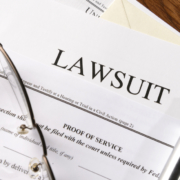Spinal Cord Injury
By Neha Pathak, MD, WebMD
The spinal cord is the major bundle of nerves carrying impulses to and from your brain to the rest of your body. Rings of bone, called vertebrae, surround the spinal cord. These bones make up your spinal column, also called your backbone.
Spinal cord injury is the result of a direct trauma to the nerves themselves or from damage to the bones and soft tissues and vessels around the spinal cord.
Spinal cord damage results in a loss of function, such as mobility or feeling. With most injuries, the spinal cord is not completely severed but either bruised or torn. Spinal cord injury is not the same as a back injury, which may result from pinched nerves or ruptured disks. Even when a person has a break in a vertebra or vertebrae, there may not be any spinal cord injury if the spinal cord itself is not affected.
What Are the Causes of Spinal Cord Injury?
Spinal cord injuries may result from falls, diseases like polio or spina bifida, motor vehicle accidents, sports injuries, industrial accidents, shootings, and physical assaults, among other causes. If the spine is weak because of another condition, such as arthritis, minor injuries can cause spinal cord trauma.
What Are the Types of Spinal Cord Injury?
There are two kinds of spinal cord injury: complete and incomplete. In a complete injury, a person loses all ability to feel and voluntarily move below the level of the injury. In an incomplete injury, there is some functioning below the level of the injury.
What Tests Are Used to Determine the Extent of Injury?
- Neurologic examinations
- CT scan or MRI of the spine
- Spine X-rays
How Is a Spinal Cord Injury Treated?
A spinal cord injury requires immediate treatment in order to address life-threatening complications and to decrease the risk of long-term problems. Corticosteroid drugs such as dexamethasone (Decadron) or methylprednisolone (Medrol) are used to reduce swelling. In some cases, surgery may be recommended. Bed rest may be needed in order for the spine to heal. After an acute spinal cord injury, physical therapy, occupational therapy, and other rehabilitation interventions sometimes are required.
There is no cure for spinal cord injury. Researchers continue to work on advances, many of which have resulted in a decrease in damage at the time of the injury.












Leave a Reply
Want to join the discussion?Feel free to contribute!